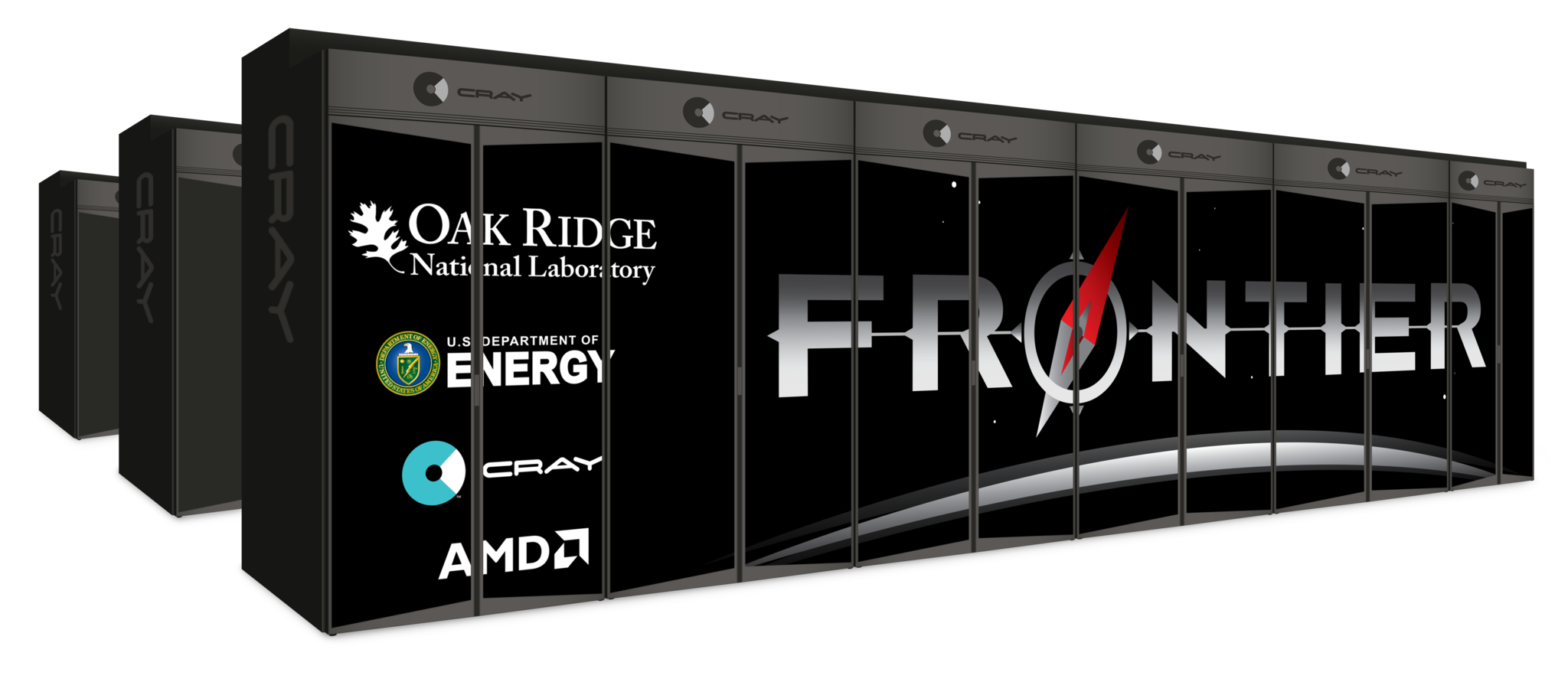
It will be the world’s fastest computer, capable of exceeding a quintillion – or 1,0000000000000 – calculations per second, with network bandwidth that would let a casual user download over 11,000 movies before you can count to “one…”
Frontier, a new exascale supercomputer being built for the Department of Energy (DOE) by Cray Inc. with AMD EPYC CPU and Radeon Instinct GPU technology, was described today by AMD CEO Mark Papermaster as “a marvel of engineering.”
Along with Cray, his company will be central to delivering the $600 million contract, with the computer to be delivered to the DOE’s Oak Ridge National Laboratory (ORNL) in 2021. The contract includes technology development funding, a centre of excellence, several early-delivery systems, the main Frontier system, and systems support.
The system will be based on Cray’s Shasta architecture and Slingshot interconnect and is the third contract for Cray’s architecture: previous awards include the $500 million Argonne National Laboratory’s Aurora exascale system. The system will let developers “fully embrace the converged use of analytics, Artificial Intelligence, and High Performance Computing at extreme scale for the first time,” Cray said.
See also: Met Office Back in the Market for a New Supercomputer
One of its challenges: tackling how much power can be delivered to a blade without cooking it and developing a unique direct liquid cooling capability for key server components. AMD and Cray are also working together to develop a tool that will let the Slingshot interconnect read and write data directly to GPU memory.
(Slingshot has extremely high bandwidth: 12.8 Tb/s/dir per switch, from 64 200 Gbps ports. As Cray’s CTO Steve Scott noted late last year: “All those ports allow us to build very large networks with very low diameter… We can create networks with over a quarter million endpoints, with a diameter of just three network hops. And only one of those hops needs to use an (expensive) optical cable. This reduces latency, but also reduces cost; the Shasta network requires half—or for larger systems, one quarter—the number of optical cables as a fat-tree to provide the same level of global bandwidth.”)
Frontier’s software stack will be a fully containerised architecture, the company noted, saying the system will demand a “complex balance of compute, interconnect, and software capabilities to enable HPC and AI applications to execute simultaneously.”
Scott said: “This poses a number of architectural challenges across the entire HPC space ranging from the development of new high density compute infrastructure, to modernizing developer software for the creation of extreme scale, data-intensive applications. Delivering these technologies for Frontier is incredibly exciting, as they will also become standard product offerings from Cray, enabling us to deliver enhanced performance and productivity to businesses large and small.”
The World’s Fastest Computer? What is the DOE Doing with All that Firepower?
Neither the simple weather forecast, nor run-of-the-mill renewable energy simulations: While the ORNL’s research programmes are broad, recent research gives a flavour of its projects. Using Summit, for example – currently the world’s most powerful supercomputer – a team led by Argonne National Laboratory recently ran three of the largest cosmological simulations known to date.
They modelled nearly two trillion particles in each simulation (creating eight petabytes of data) to create “virtual universes” that will enable scientists to compare next-generation telescope observations with some of today’s reigning physics theories, including the impact of dark energy and the mass of neutrinos, once thought to be massless, on the structural formation of the universe.
AMD said projects will include work on biomedical data, climate science and materials science, saying the system is being “designed to simulate, model, and advance the understanding of the interactions underlying the science of weather, sub-atomic structures, genomics, physics, and more.”
The ORNL has up to 3,200 visiting research scientists yearly. The centre also has a substantial partnership programme with industry, working with more than 100 companies every year. More than 20 startups have been formed based on ORNL-developed technologies over the past five years, it says.
To learn more about Frontier, see here.






